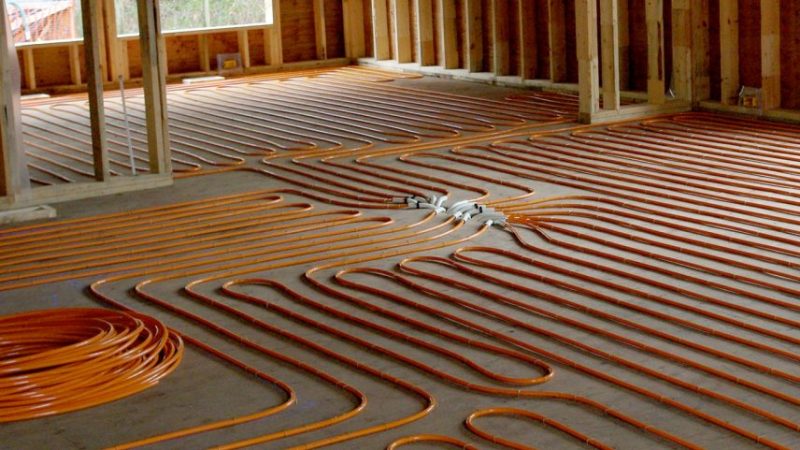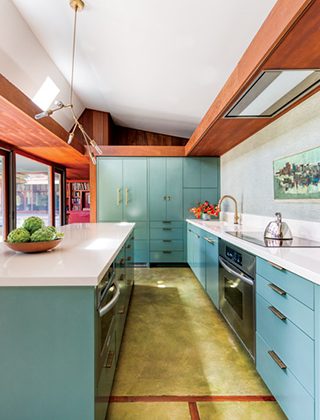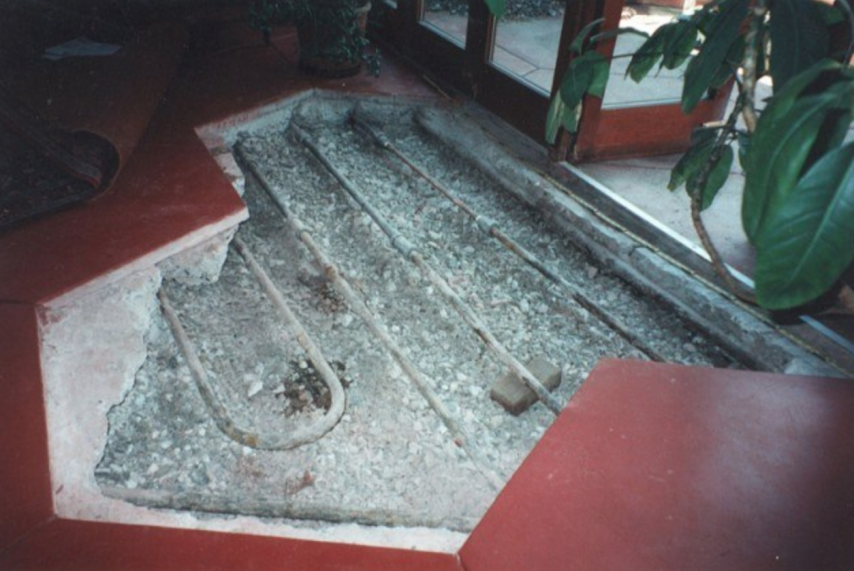
Radiant heating is a type of heating system that uses tubes or wires below the floor to warm a space. There are two types: electric radiant heating, which uses electric wires to create heat, and hydronic radiant heating, which uses hot water (normally around 100-120 degrees Farhenheit) circulating through tubes to create heat.
The heat from underneath the floor radiates upwards, warming the room from the ground up and losing less heat to drafty ceilings or roofs. Electric radiant heating is expensive to maintain, so it’s normally only used to heat small spaces, like a kitchen floor, while hydronic radiant heating, though expensive to initially install, can be used to heat entire homes for a lower cost than forced-air heating.
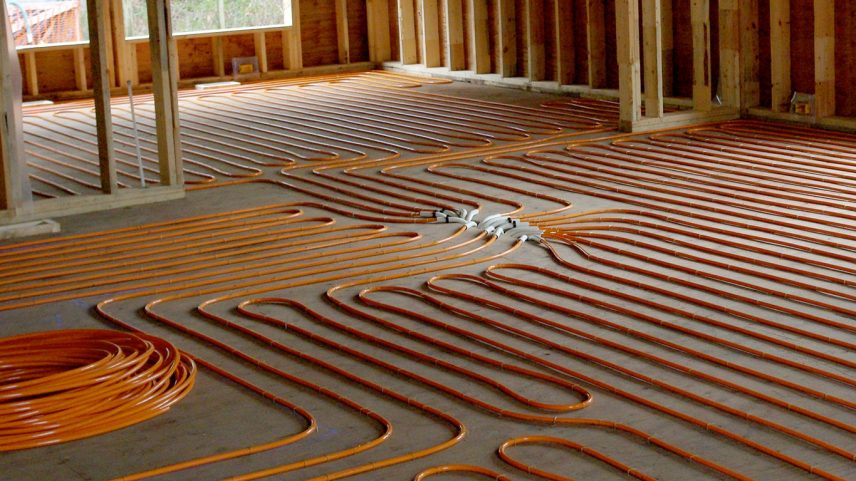
Pros and Cons
Radiant heating can be quite pricey to install— the Radiant Floor Company estimates hydronic radiant heating costing $6 a square foot to install and electric radiant heating costing $1.75 a square foot. Thankfully, once radiant heating is installed, it rarely ever malfunctions (especially if it’s hydronic!), so you can be assured that it’s a low-maintenance investment in your home.
Additionally, radiant heating is an efficient and environmentally friendly way to heat a space, as it uses less energy than traditional heating. It’s also an allergen-free way to bring some warmth, as it’s not blowing lots of dust into a room. And if you want radiant heating in your own home, you don’t need to tear up all your flooring to get it, provided you have a basement or crawl space. Radiant heating is now made in panels that can be retrofitted underneath existing flooring joists.
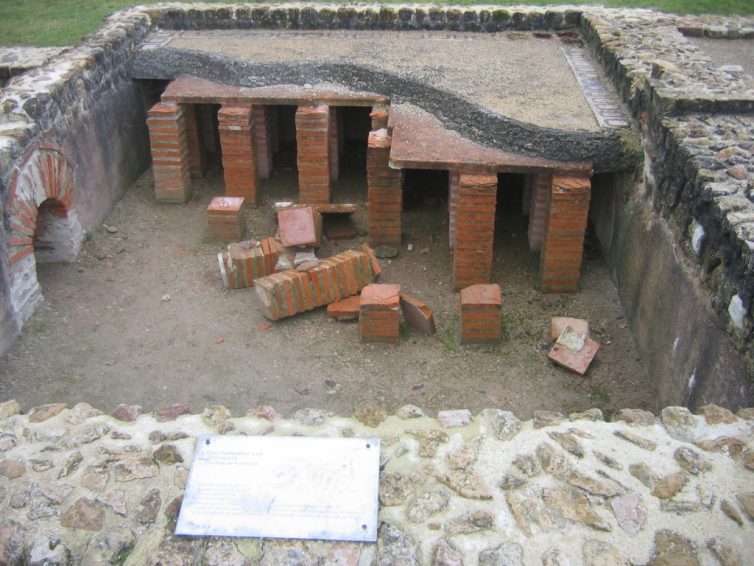
Its History
Though it may seem like a modern invention, radiant heating has prehistoric beginnings! Early radiant heating involved smoke directed into trenches under floors to heat living areas during the neoglacial and neolithic periods. Later, the ancient Romans did something similar with hypocausts, which were rooms filled with warm air placed under floors.
Radiant heating took off in the Eastern Hemisphere and was used throughout the millennia, but it wasn’t widely seen in the United States until the mid 20th century. This was thanks to people like Frank Lloyd Wright, who learned of radiant heating from visiting Japan. He later built homes that used it.
Soon, developers like William Levitt and Joseph Eichler incorporated it into their developments in the 40s and 50s. They liked radiant heating because it was economical and efficient, and many modern-day Eichler lovers seek out homes with the original hydronic radiant flooring.
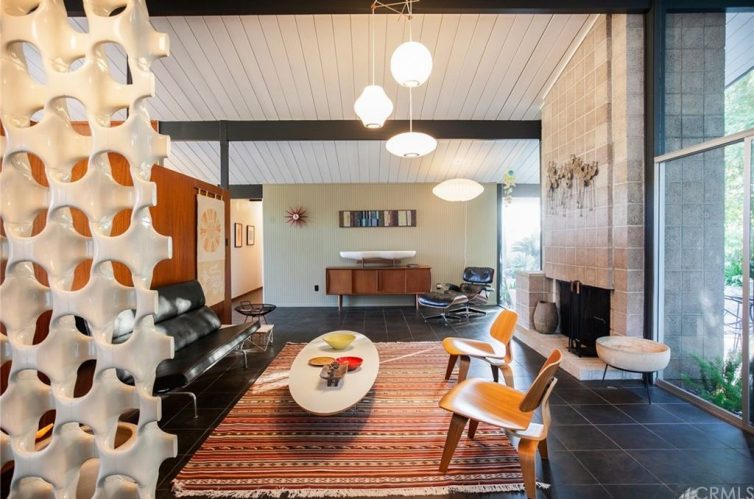
So You’ve Got An Eichler
If you find an Eichler (or another mid century home) with the original radiant flooring, what should you look out for? The first thing you should check on is the material of the pipes and tubes beneath the floor. Though most mid century radiant heating was done with long-lasting copper pipes, some used steel, which corrodes over time. This can be looked for thermal imaging, which checks for hot water leaks. The steel pipes can be replaced with newer, more durable PEX pipes.
Additionally, the radiant heating in some Eichlers is quite inefficient, according to Palo Alto Online. This is because it could have been installed far beneath the flooring without an insulator, making it lose a lot of its heating power to the earth. This can be fixed by replacing the old system with a new one that includes more insulation and is closer to the floor.
Though these repairs may be costly, they’re an important way to guarantee the continued heating abilities of your mid century home. For more resources, check out the Department of Energy or Destination Eichler. And of course, don’t forget to follow us on Instagram, Facebook and Pinterest for more Atomic Ranch articles and ideas!

